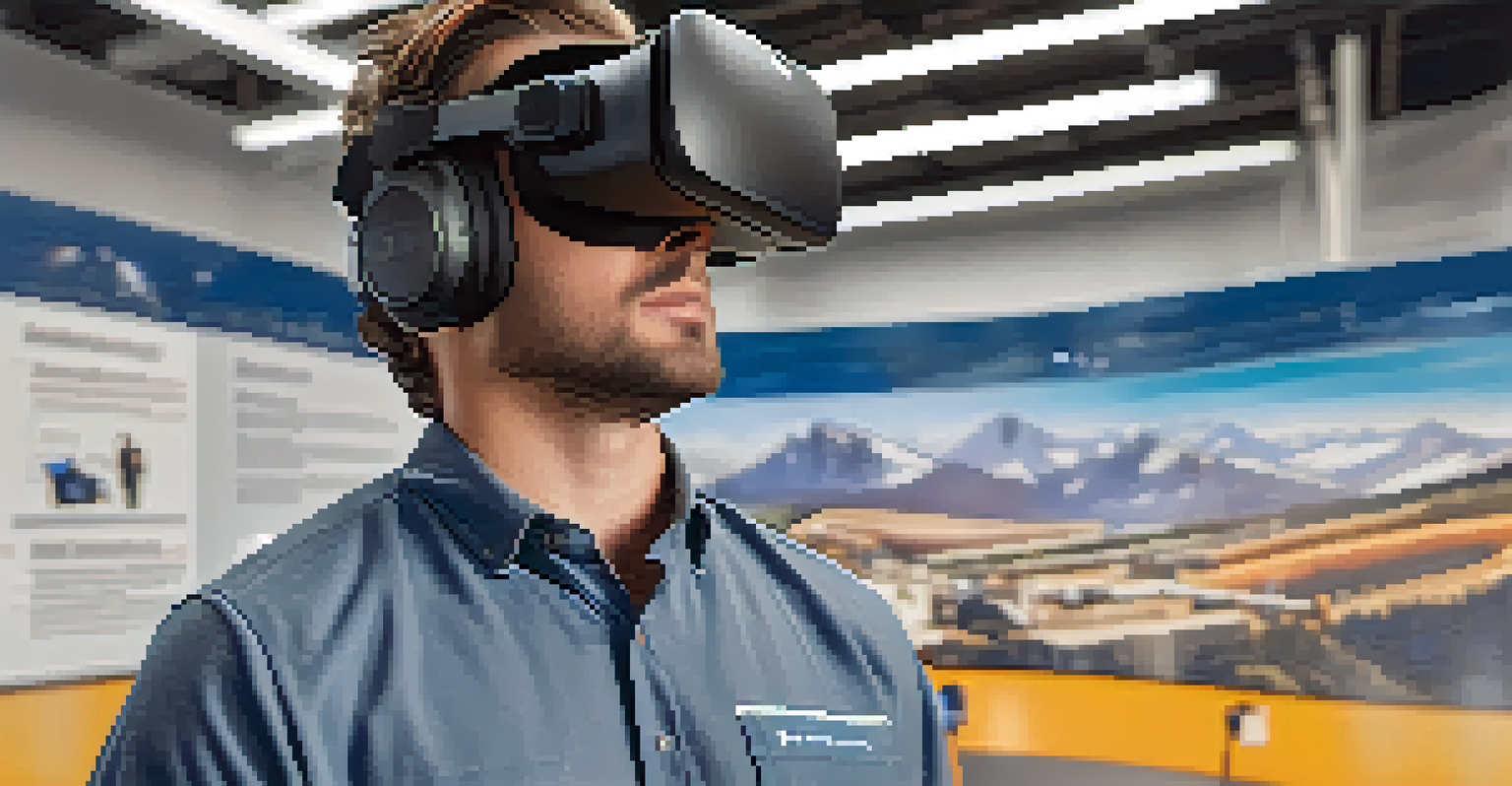Innovative Training Programs for Employee Skill Enhancement

The Importance of Continuous Employee Skill Development
In today's fast-paced work environment, continuous skill development is crucial. Employees must adapt to new technologies and methodologies that evolve rapidly. Investing in training not only enhances individual capabilities but also drives overall organizational success.
An investment in knowledge always pays the best interest.
Moreover, companies that prioritize ongoing training often see higher employee satisfaction and retention rates. When employees feel valued and see opportunities for growth, they are more likely to stay with the company long-term. This creates a positive work culture and boosts morale.
Ultimately, continuous skill enhancement is not just a perk; it's a necessity. As industries change, so do the skills required to succeed, making employee training an essential strategy for staying competitive.
Blended Learning: A Perfect Mix of Methods
Blended learning combines traditional face-to-face instruction with online components, offering flexibility and engagement. This approach allows employees to learn at their own pace while still benefiting from personal interaction with trainers. For example, a company might use online modules supplemented by in-person workshops.

This method caters to diverse learning styles, ensuring that both visual and auditory learners can thrive. Employees can revisit online materials as needed, reinforcing concepts and boosting confidence. This flexibility also accommodates busy schedules, making training more accessible.
Continuous Skill Development Is Key
Investing in ongoing training enhances employee capabilities and drives organizational success.
Blended learning has proven to enhance knowledge retention and application, making it a valuable strategy for skill enhancement. Companies adopting this hybrid model often report increased participation rates and improved outcomes.
Gamification: Making Learning Fun and Engaging
Gamification involves incorporating game-like elements into training programs to motivate employees. By using points, badges, and leaderboards, companies can create a competitive yet fun environment that encourages participation. For instance, sales teams might earn rewards for completing training modules.
The only way to do great work is to love what you do.
This playful approach not only boosts engagement but also fosters a sense of accomplishment. Employees are more likely to complete training when they can track their progress and celebrate achievements. It transforms what could be a tedious process into an exciting challenge.
Furthermore, gamification can enhance collaboration among employees as they work together to reach common goals. By fostering teamwork, organizations can build stronger relationships and a more cohesive work environment.
Microlearning: Bite-Sized Learning for Busy Professionals
Microlearning focuses on delivering content in short, digestible segments. This approach is particularly effective for busy professionals who may not have time for lengthy training sessions. For example, short videos or quick quizzes can convey essential information in just a few minutes.
The beauty of microlearning is its ability to cater to the immediate needs of employees. When faced with a specific task, they can quickly access relevant training without sifting through extensive materials. This on-demand learning can significantly improve productivity and efficiency.
Blended Learning Boosts Engagement
Combining online and in-person training methods caters to diverse learning styles and improves knowledge retention.
Additionally, microlearning allows for continuous reinforcement of skills, helping employees retain information better. By breaking down complex topics into smaller pieces, companies can ensure their workforce remains knowledgeable and capable.
Mentorship Programs: Learning from Experience
Mentorship programs connect less experienced employees with seasoned professionals, providing invaluable learning opportunities. These relationships not only facilitate knowledge transfer but also foster professional growth and development. For instance, a junior employee might shadow a senior colleague to gain insights into best practices.
Mentorship encourages open communication and allows for personalized feedback tailored to individual needs. This one-on-one interaction can address specific skill gaps and promote confidence. Additionally, mentors can share their career journeys, inspiring mentees to pursue their goals.
By investing in mentorship, organizations create a supportive culture that values learning and growth. This not only enhances employee skills but also strengthens bonds within the team, promoting a positive work environment.
Virtual Reality Training: Immersive Learning Experiences
Virtual reality (VR) training offers immersive learning experiences that traditional methods cannot match. Employees can practice skills in a simulated environment, allowing them to make mistakes and learn without real-world consequences. For example, VR can be used for safety training, where employees navigate dangerous scenarios safely.
This hands-on approach enhances engagement and retention, as employees can visualize and practice skills in a realistic context. It appeals to those who learn best through experience rather than passive observation. Additionally, VR can be used for remote training, making it accessible to a broader audience.
Gamification Makes Learning Fun
Incorporating game elements into training encourages participation and fosters teamwork among employees.
As technology advances, VR training is becoming more affordable and widely adopted. Companies looking to innovate their training programs can leverage this cutting-edge technology to create impactful learning experiences.
Feedback and Assessment: Key to Continuous Improvement
Regular feedback and assessment are critical components of any effective training program. By evaluating employee progress and gathering input, organizations can identify areas for improvement and adjust their training methods accordingly. For instance, surveys and assessments can provide insights into what's working and what isn't.
Creating a culture of feedback encourages employees to take ownership of their learning journey. When employees receive constructive criticism, they can refine their skills and enhance their performance. This ongoing dialogue also fosters a sense of accountability and motivation.

Moreover, assessment tools can track skill development over time, helping organizations measure the impact of their training initiatives. By continuously refining training programs based on feedback, companies can ensure they remain effective and relevant.